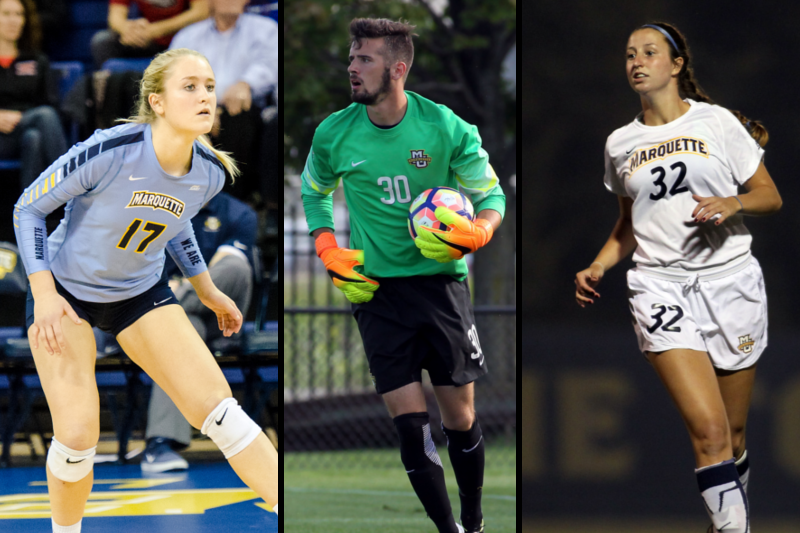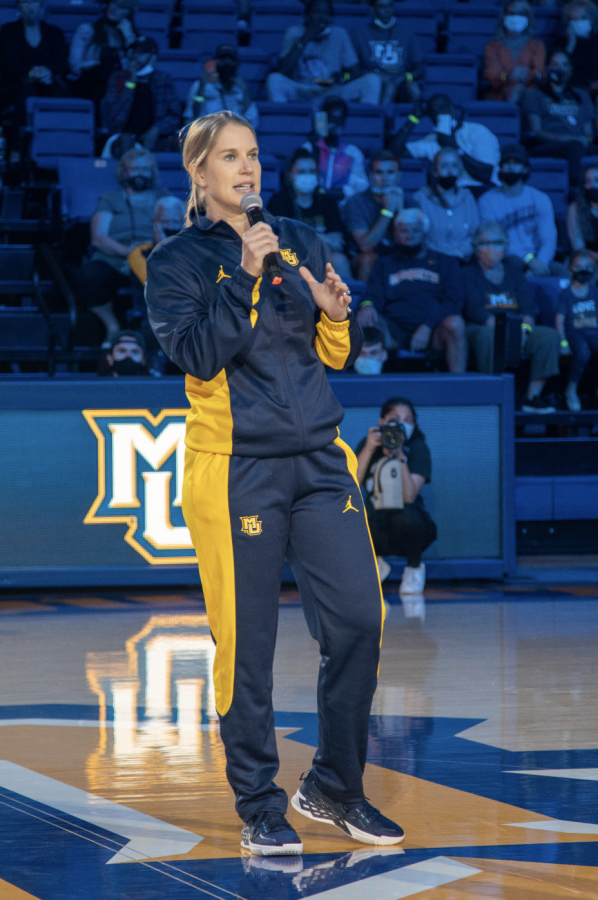There is an increase in female presence in sports media. However, sports play-by-play and color analysts are still predominantly men.
Women in the industry continually battle through times of adversity to see progress in their presence in sports journalism.
Nancy Armour, a Marquette alumna, sees this trend reporting on some of the highest profile events in sports, including the Super Bowl, the Olympics and the NCAA Final Four.
She tried her hand at sports reporting for the first time at Marquette, as the only female sports reporter for the Marquette Tribune in the 1980s. After graduation, one of her first jobs was to cover Notre Dame, including their football team, for the
Associated Press.
When Armour would try to go into the men’s locker room to do her job and get interviews for coverage, she was often not allowed into the locker room. At the same time, her male colleagues entered the locker room without issues, giving her peers advantages in coverage.
Since then, Armour says she has seen tremendous growth within the industry in regards to oppurtunities for women.
“The exposure of women in sports media has gotten better because we aren’t a novelty anymore,” Armour explains. “Women are now a visible part of the fabric of sports journalism.”
Katie George and Sophia Minnaert deal with similar experiences as sports reporters in Milwaukee.
George is the sideline and digital reporter for the Milwaukee Bucks. After watching Erin Andrews on ESPN, she says she knew she wanted to go into sports broadcasting. George also gives credit to women such as Doris Burke and Robin Roberts, who she views as pioneers for women in sports media.
“I find it so much more prevalent to see women in sports,” George says. “It has definitely trended very much in the
right way.”
She admits there is still work to be done.
“I would love to see more women become play-by-play or color commentary analysts,” George says. “Sarah Kustok is the color analyst for the Brooklyn Nets, and she is the first full-time female to do color for an NBA team. Usually the person doing color is a former NBA player.”
George is just one of many reporters who is covering a sport she never played. In George’s case, she played collegiate volleyball for the University of Louisville and is now covering professional men’s basketball.
“I have worked hard, and I deserve a seat at the table just like everybody else,” George says. “I have just as much knowledge and have just as much to offer, even though I didn’t play basketball growing up and I didn’t play in the NBA.”
Despite not having first-hand experience in this professional sport, George proves she is a professional sports reporter through her hard work.
“It’s a really tough industry to break into and it’s a tough industry to stay in, it’s very cutthroat and competitive,” George says. “If you’re really someone who wants to do this, you need to be passionate, committed and (prove) you’re willing to work.”
Minnaert, like Armour, is a Marquette alumna. She worked heavily with the Milwaukee Brewers over the past few years through Fox Sports Wisconsin. In June 2018, the Brewers hired Minnaert as their broadcast and digital features content director.
Minnaert agrees it would be an improvement in the gender equality of sports media if there were more women stepping into additional play-by-play analyst and reporter roles. But she says she has always been comfortable working in a sideline reporting role because of the relatively better representation of women.
“Representation is very important,” Minnaert says. “I got into doing sideline reporting because I saw other women doing it, like Doris Burke and Jessica Mendoza.”
Minnaert’s goal is to not even need these conversations.
“I’m hoping it gets to the point where we don’t even have to have these conversations anymore and women have an equal amount of roles in this industry,” Minnaert says.


